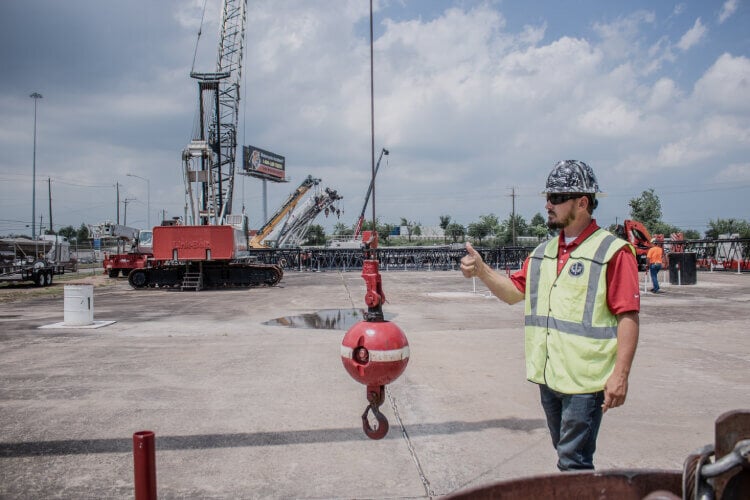
Signal persons are a crane operator’s eyes and ears on the ground and have a major responsibility in guiding operations.
Correctly signaling and communicating with crane operators is vital to preventing crane accidents. A crane operator should move loads according to the established code of signals, and should use a trained and qualified signal person.
A signal person is required when the point of operation is not in full view of the operator, or the crane operator’s view is obstructed in the direction of where the equipment or load is traveling.
Per OSHA 1926 CFR Subpart CC Cranes and Derricks in Construction:
A signal person is considered qualified if they:
- know and understand the type of signals used at the worksite,
- are competent in using these signals,
- understand the crane operations and limitations of the equipment, including the crane dynamics involved in swinging, raising, lowering and stopping loads and in boom deflection from hoisting loads,
- demonstrate they meet the requirements of the above through an oral or written test, and through a practical test,
- are evaluated by a Qualified Evaluator - 3rd party or in-house.
There are many training programs available and you should be selective. Look for a training company whose curriculum emphasizes:
- the roles and responsibilities of a signal person,
- proper knowledge of hand signals,
- knowledge of voice-activated and audible signals,
- crane operations and rigging fundamentals with emphasis on rigging inspection, load handling, and how factors such as wind, load and boom deflection, and swing rate can impact load handling and crane operations,
- utilization of the latest ASME and OSHA standards and regulations, including the “new” regulation for working around power lines, which is crucial to a signal person’s job function,
- interactive, hands-on training, coupled with quizzes and testing.
CICB has been providing training since 1969, and all of their programs meet or exceed OSHA, ASME/ANSI requirements.
Remember, properly given hand signals reduces accidents and lost work days, and saves lives.





